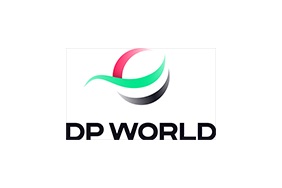Redefining Cold Chain Standards: A Shift Toward Sustainability and Efficiency in Food Logistics
DP World Americas COO Morten Johansen explores how reducing the freezing standard by 3°C can significantly improve the carbon footprint of cold chains
Published 04-19-24
Submitted by DP World

For nearly a century, the cold chain industry has complied with a freezing standard of -18°C (or just below 0°F) when transporting and storing perishable goods around the globe. In his article, “Revolutionizing The Cold Chain: Reducing Freezing Standards To Combat Climate Change” published on Forbes, DP World COO Morten Johansen discusses a significant shift in the cold chain industry aimed at enhancing food security and addressing climate change impacts.
Historically, the industry has maintained a standard freezing temperature of minus 18°C. But Johansen's company, DP World, is advocating for a change to minus 15°C, arguing that it can significantly reduce energy use and greenhouse gas emissions without compromising food safety or quality.
The cold chain's role in global energy consumption and greenhouse gas emissions is substantial, accounting for up to 5% of global energy needs and 2.5% of total greenhouse gas emissions. Johansen’s article highlights the waste problem associated with inadequate refrigeration, which leads to the loss of millions of tons of food annually, further contributing to greenhouse gases.
A 2023 study supported by DP World suggests that the proposed temperature adjustment could reduce carbon dioxide emissions by approximately 17.7 million metric tons annually—equivalent to the emissions from 3.8 million cars. This change is also projected to decrease costs in the supply chain by 5% to 12%, enhancing competitiveness in the industry.
Johansen emphasizes the need for collective effort and leadership in adopting these new standards to ensure the success of this transformation in the cold chain sector. He advocates for a systematic approach involving clear communication, rigorous testing, and collaborative stakeholder engagement to implement these changes effectively.
This initiative represents a proactive step towards more sustainable logistics practices, with potential significant impacts on environmental sustainability and food security worldwide. Read the full article here: “Revolutionizing The Cold Chain: Reducing Freezing Standards To Combat Climate Change.”
###

DP World
DP World
Trade is the lifeblood of the global economy, creating opportunities and improving the quality of life for people around the world. DP World exists to make the world’s trade flow better, changing what’s possible for the customers and communities we serve globally.
With a dedicated, diverse and professional team of more than 103,000 employees spanning 75 countries on six continents, DP World is pushing trade further and faster towards a seamless supply chain that’s fit for the future.
We’re rapidly transforming and integrating our businesses -- Ports and Terminals, Marine Services, Logistics and Technology – and uniting our global infrastructure with local expertise to create stronger, more efficient end-to-end supply chain solutions that can change the way the world trades.
What's more, we're reshaping the future by investing in innovation. From intelligent delivery systems to automated warehouse stacking, we’re at the cutting edge of disruptive technology, pushing the sector towards better ways to trade, minimising disruptions from the factory floor to the customer’s door.
WE MAKE TRADE FLOW TO CHANGE WHAT'S POSSIBLE FOR EVERYONE.
More from DP World

